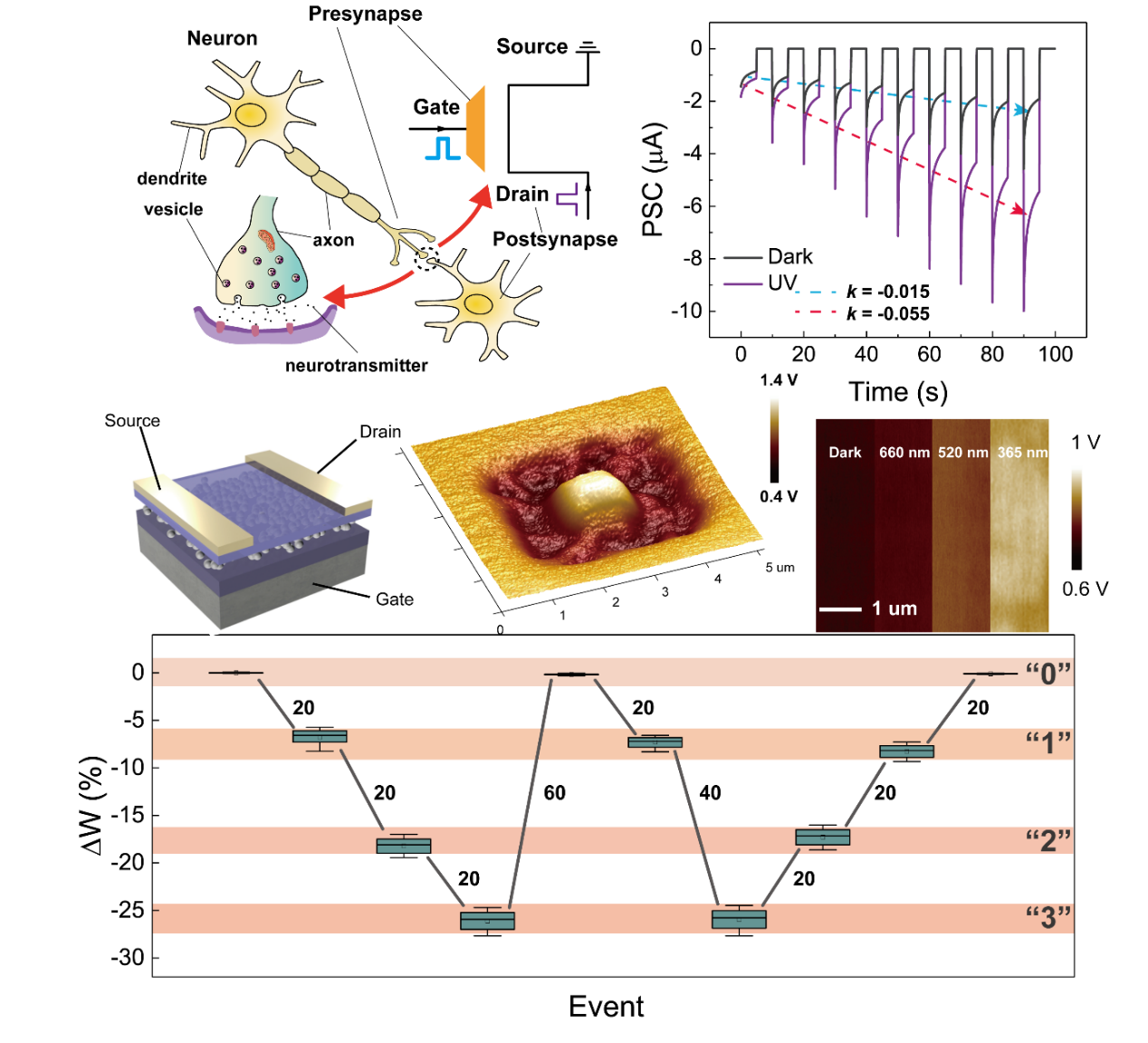Student JingyuMaofrom Ye Zhou’s Group published a paper titled “Artificial Synapses Emulated Through a Light Mediated Organic-Inorganic Hybrid Transistor” in J. Mater. Chem. C (Impact Factor 5.976 ) on November 3, 2018. This article was part of the themed collection: 2018 Journal of Materials Chemistry C HOT Papers and invited as the back inside cover.
Neuromorphic computing could tackle with the inherent limitations of traditional von Neumann architecture in devoted machine learning applications. Nevertheless, implementation of transistor-based artificial synapse which is the fundamental building block for mimicking the functions of biological synapse remains challenging owing to the nonlinear and asymmetric weight update protocol and fast saturation within initial few pulses. Here, three-terminal photoactive synapse is proposed based on organic transistor combined with black phosphorus (BP)-ZnO hybrid nanoparticles at both electronic mode and photoactive mode. The channel conductance can be manipulated by the charge trapping inside BP-ZnO NPs at electronic mode which ensures enlarged the variation margin while optical modulation of the excitatory and inhibitory synaptic weight with symmetry and linearity variation is realized since extended energy threshold of photon absorption and accelerated dissipation of exciton can be achieved in BP-ZnO hybrid NPs. Crucially, we can modulate the synaptic weight simply by varying the wavelength of the light source. This study proposed a simple and powerful way with multiple forms of synaptic plasticity resembling the analogue nature of biological synapse due to the light mediated electrical performances.
This work was supported by the grants from Natural Science Foundation of China, the Science and Technology Innovation Commission of Shenzhen, Shenzhen Peacock Technological Innovation Project, Guangdong Provincial Department of Science and Technology, the Department of Education of Guangdong Province, and the Natural Science Foundation of SZU.
Ref:https://pubs.rsc.org/en/content/articlelanding/2018/tc/c8tc05030a#!divAbstract

Figure 1 Mao Jingyu is testing the device in Lab

Figure 2 Device structure, electrical performances and KPFM characteristics


